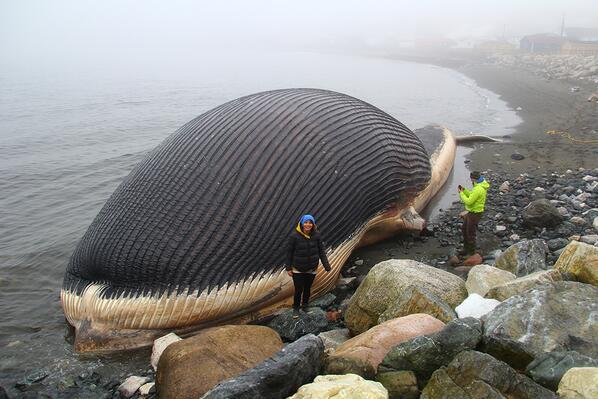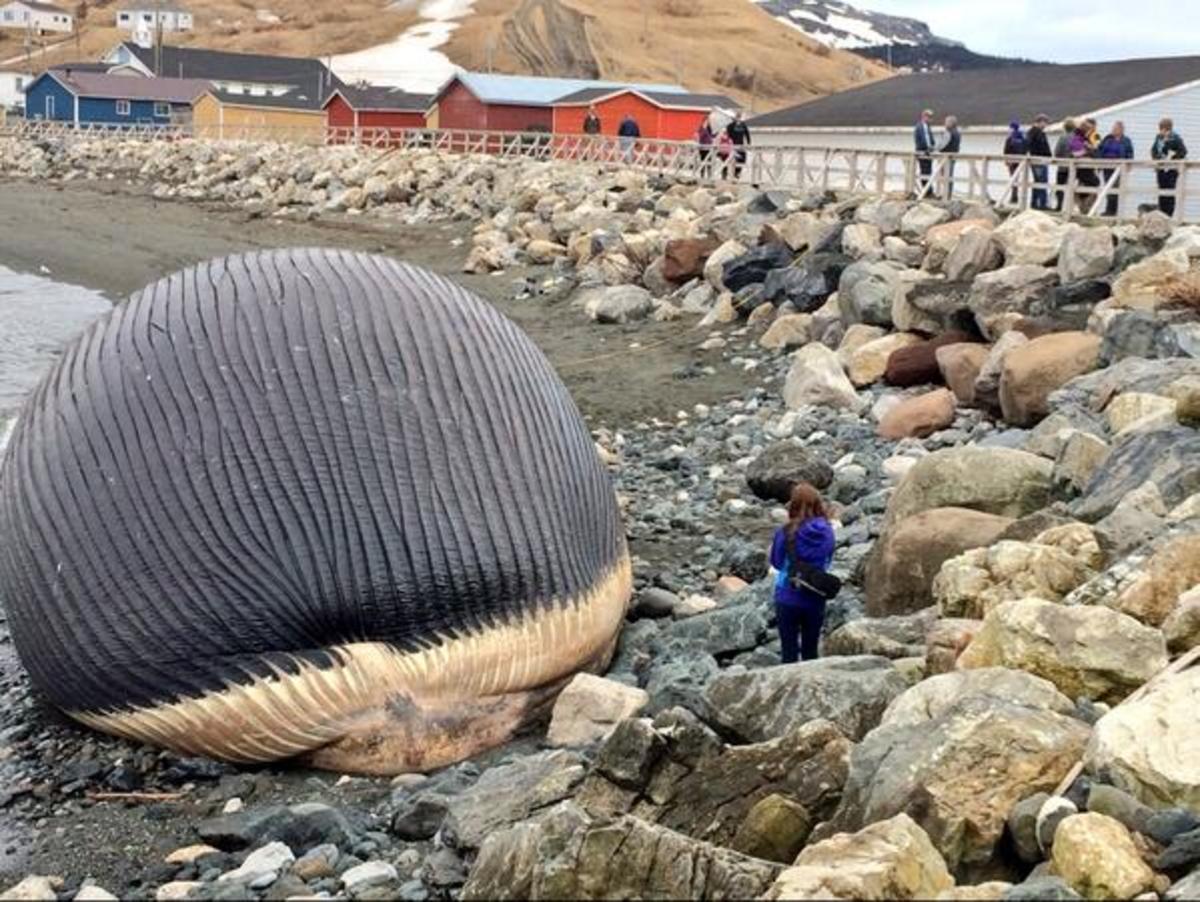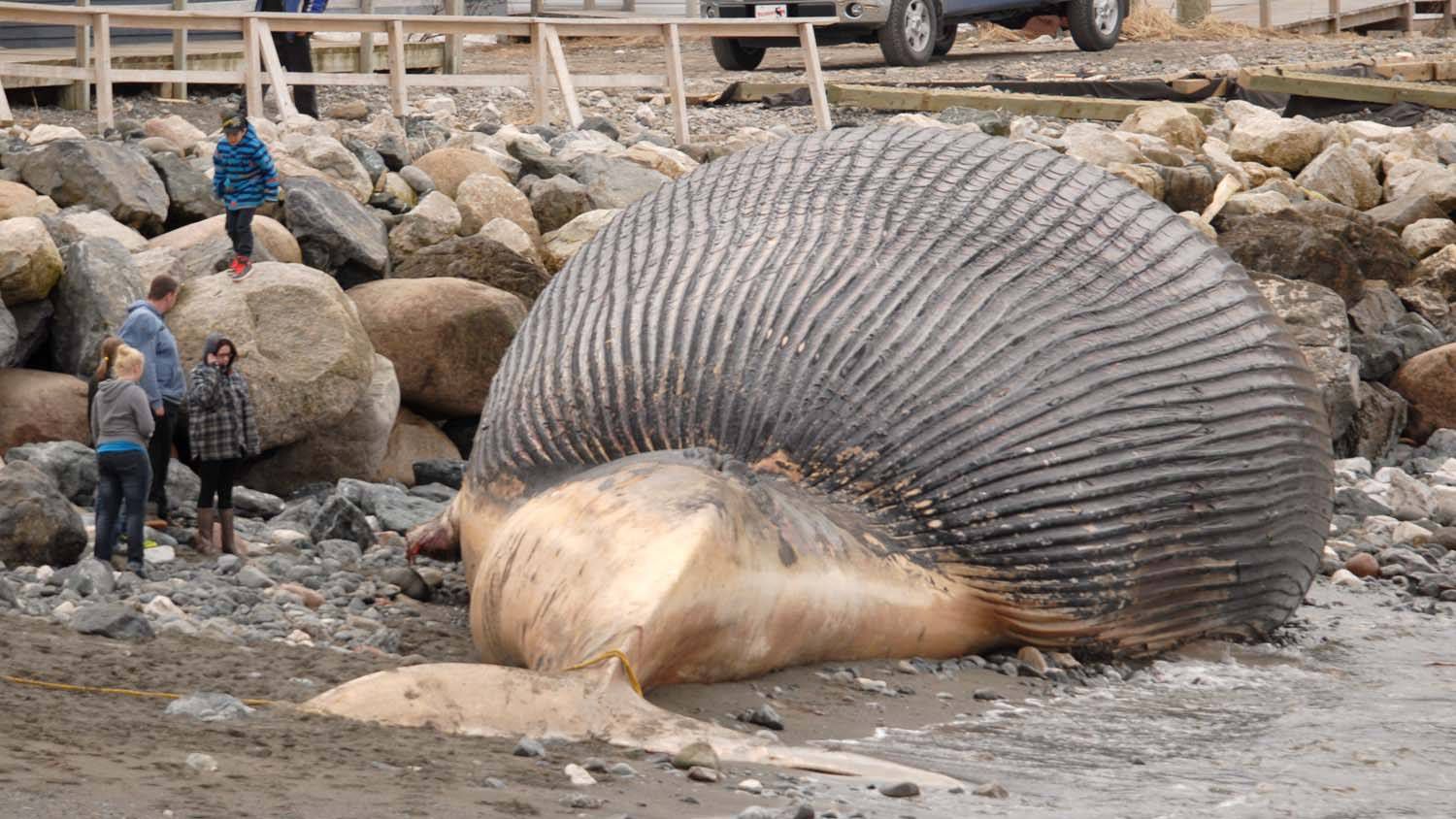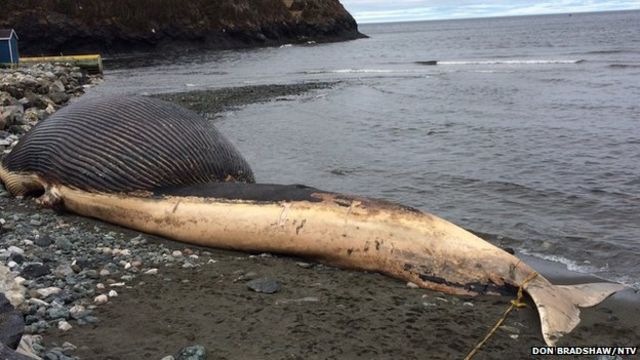
It has been more than a week since a giant blue whale washed ashore at Trout River, Newfoundland, and locals are worried that the bloated mammal will explode.
“The whale is blowing up. It looks as if it’s a big balloon, from a distance,” Emily Butler, Trout River’s town clerk, told Canada’s CBC News. “There is a possibility as well, with all the gases inside the whale, that it may possibly explode.”
The beached whale, believed to be one of nine blue whales that perished in thick ice three weeks ago west of Newfoundland, is mired on the sand near Trout River’s historic boardwalk, and its stench fills the air.

Still, the carcass is drawing tourists close, and the concern is that it will explode with people nearby. But as many marine mammal experts have learned over the years, moving a giant whale is an extremely difficult problem.
Butler said that Trout River has been trying to keep people at bay, and to find a government agency that will dispose of the carcass.
“We really don’t have any resources, and we really don’t have the expertise,” she said. CTV News reports that both whales are among the nine that either drowned or were crushed by ice, and that Canada’s Department of Fisheries and Oceans had hoped that currents would sweep their carcasses to sea.
CTV tweeted the image atop this post, crediting local resident Johnny Patton.
Don Bradshaw, a journalist with NTV, tweeted the second image, beneath the caption: “A little better perspective on just how massive this bloated whale carcass is.”

Bradshaw stated that that the whale measured 81 feet, which makes it a full-sized adult. Whales have exploded in the past, due to the buildup of gasses.
But perhaps the most famous exploding whale involved a 45-foot gray whale that was blown up intentionally on an Oregon beach in 1970.
Engineer George Thornton hoped that with enough dynamite the rotting carcass would be obliterated and airborne particles would drift out over the ocean.
Instead large chunks of whale blubber were launched inland and rained upon dozens of onlookers who had come to watch from about a quarter-mile away, which they presumed would be a safe distance.
Here’s hoping that Trout River finds a less-messy solution to its problem.









